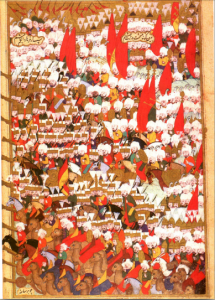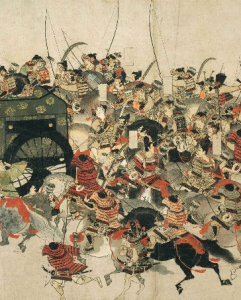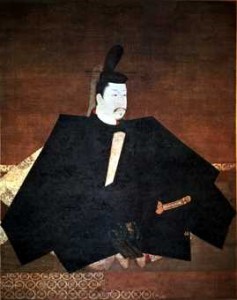During our previous classes I began to notice certain similarities between art composition between the illuminated Book of Festivities and the Japanese Heiji: Monogatari Emaki (Sanjo) Scroll. While one may be part of a book and the other a scroll, they both tell a narrative.The Book of Festivities depicts a large crowd clustered together and based on the title of the book one can suggest that they celebrating something. On the other hand the Sanjo Scroll tells a the tale of the attack on the Sanjo palace during the Heiji period. The night of the event is narrated as the scroll unfolds form right to left. The most prominent similarity between these two works of art was the composition. Why did the artist decided to cluster people together in these pieces?

(to see the full scroll go to, https://upload.wikimedia.org/wikipedia/commons/1/17/Heiji_Monogatari_Emaki_-_Sanjo_scroll_complete.jpg)
The Book of Celebrations was not the only thing that made me think of Japanese art but also the the portrait shown in class “An Imperial Celebration by Surname-I Hümayun.” The portrait closely imitates the portrait Minamoto no Yoritomo. As it is common to create portraits of important people, I can assume that the person in “An Imperial Celebration by Surname-I Hümayun” is a Sultan of some sort. In the Hanging scroll of Minamoto no Yoritomo, the scroll depicts the first shogun of the Kamakura shogunate. Both figures appear to be sitting/kneeling in the portrait. The face the same way as well. The portraits vary in the color and angles used. What do think? Is this a coincidence or is there some influence? If so, where is it coming from?




You pose a very interesting comparison between The Book of Festivities and those Japanese scrolls. The images you chose are strikingly similar and the reasoning and story behind each image is very interesting as well. Your choice of comparing different cultures’ artworks shows the interconnectivity and shared influences between cultures, which is always important to keep in mind.
I took the Japanese Art History course where we looked at those scrolls and I too was struck by the similarity in style. My Name is Red mentions that the Herat masters and their successors being influenced by Chinese works of art, so that could be a source of the influence.
Some degree of it is coincidence, however. Handscrolls were meant to be viewed in a very particular manner, for example, gradually being unrolled to reveal more of the scene. It was not intended to be viewed in the same manner as the page from the Book of Festivities. Though I too would be curious to learn if there is some similarity in why they chose to draw large groups of characters similarly.